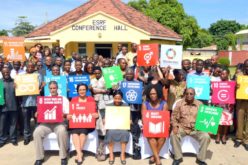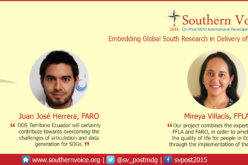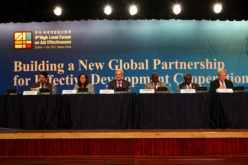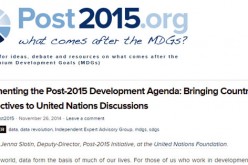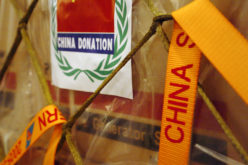Financing future goals: Aid will not be a panacea for Africa’s development
Written by John Kwakye, Senior Fellow at the Institute of Economic Affairs – Ghana. He has recently launched a new paper – Looking beyond Aid to Fund Africa’s Development – part of the Southern Voice Initiative.
The key to accomplishing the next round of development goals is a good financial scheme. Africa lacks adequate resources of its own and has been dependent on aid to finance its development. In fact, aid has helped the continent to reach relatively high growth rates in a rather sluggish world economy. However, aid has come with costs and has not allowed Africa to make the desired progress towards the achievement of the MDGs.
Issues with Aid in Africa
The effectiveness of aid — or lack of it — in Africa has an extensive literature. The Paris Declaration and the Accra Agenda for Action speak volumes on the subject. In my IEA policy paper on Aid to Africa, I point out that aid to the continent has several pitfalls that undermine its effectiveness. Among others, aid is inadequate in relation to Africa’s needs in terms of overall quantity as well as regarding allocation to basic social services, which form the core of the MDGs. Bureaucracy, uncertainty and volatility associated with aid impart instability to African budgets and undermine development projects. “Aid tying” detracts from the needs of recipient countries and denies them opportunities to benefit from competition. Demanding policy conditions that often accompany aid tend to inhibit maximum economic expansion and optimum social welfare in African countries. Aid creates indebtedness, which, in part, resulted in the rescue of many African countries by the Highly Indebted Poor Countries Initiative (HIPC)and theMultilateral Debt Relieve Initiative (MDRI) mechanisms. Aid results in addiction, complacency and lethargy in mobilizing Africa’s own resources.
Alternative resources for development in Africa after the MDGs
The question is: if aid has these severe pitfalls — which have undermined its effectiveness — does Africa have an alternative to turn to in order to fund its future development beyond the MDGs? Again, in my IEA paperand an accompanying Legislative Alert— which summarises the main paper to focus on the key issues and is mailed to 2000 top policymakers in Ghana — I suggest seven key alternative means for Africa to mobilize resources to support its development:
1. The first point of call is the national budget. African budgets can provide additional resources to finance development, but this potential is often ignored. Reforming both revenue and expenditure can create additional resources for development.
2. Domestic capital markets have huge potential for mobilizing resources for Africa’s development, but they remain undeveloped in many countries. Developing capital markets and unleashing their resource potential requires providing the requisite institutional infrastructure and legal framework and creating a stable macroeconomic environment.
3. Remittance flows to Africa from their populations outside the continent have been contributing to financing consumption and investments at home. These flows can be maximised by offering more attractive terms, reducing remitting costs and reaching bilateral agreements with host countries.
4. The African Diaspora also hold huge amounts of resources that can be tapped for development of the continent. This can be done through issuance of bonds backed by appropriate institutional reforms to make it attractive to remit this capital.
5. International private capital,including foreign direct investment (FDI) — which the HLPR recognizes as an important source of post-2015 finance — is available to be used for the development of Africa. To be successful in competing for this capital, African countries should create suitabledomestic conditions.
6. African countries can bring forward future foreign exchange flows — including export proceeds and remittances — fortoday’s development. This can be done through securitization of those flows.
7. Africa can also use the vehicle of “reverse capital flight” to mobilize additional resources for the continent’s development. This entails stemming outflow of illicit funds from Africa and recovering stolen wealth hidden abroad, taking advantage of the United Nations Office on Drugs and Crime (UNODC) and the Stolen Assets Recovery (STAR) initiatives, among others.
What does this mean for the Post-2015 Development Agenda?
An important question for the Post-2015 Development Agenda is what role aid will play. The clear — and welcome — message is that aid will continue to be an important component of the new Agenda and donors must honour their obligations in that regard. However, developing countries must take their destiny into their own hands and mostly finance their own development. This is why the above alternative vehicles for mobilizing extra resources are so crucial.
The post-2015 Agenda is, however, not just about aid or other forms of finance. The most important component or requirement is “a new global partnership” that was not so apparent under the MDG-era. As emphasized by the post-2015 High Level Panel Report, this partnership should entail a “new spirit of solidarity, cooperation, and mutual accountability.” Also, it is important that the new agenda clearly moves from “vision to action,” as appropriately underscored by the HLPR.
Clearly, the Post-2015 Agenda cannot be business as usual. Most importantly, it demands resources, partnership, and action. Also importantly, any new targets to succeed MDG8 on global partnership need to be refocused, so that they can effectively address basic social services and new priorities like employment that are critically important to Africa.

1,358 total views, 1 views today



